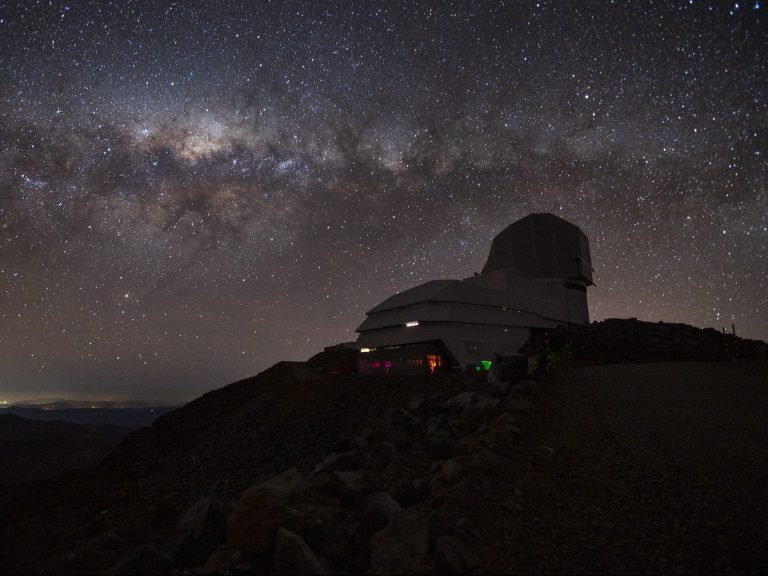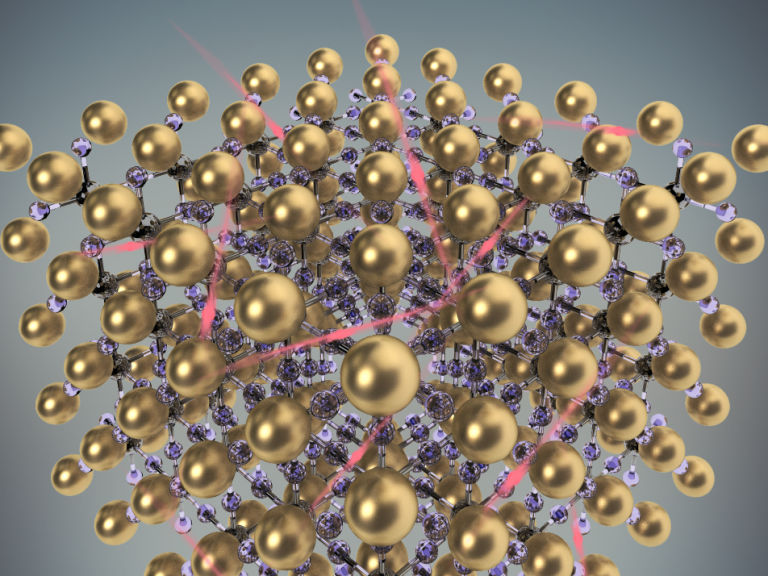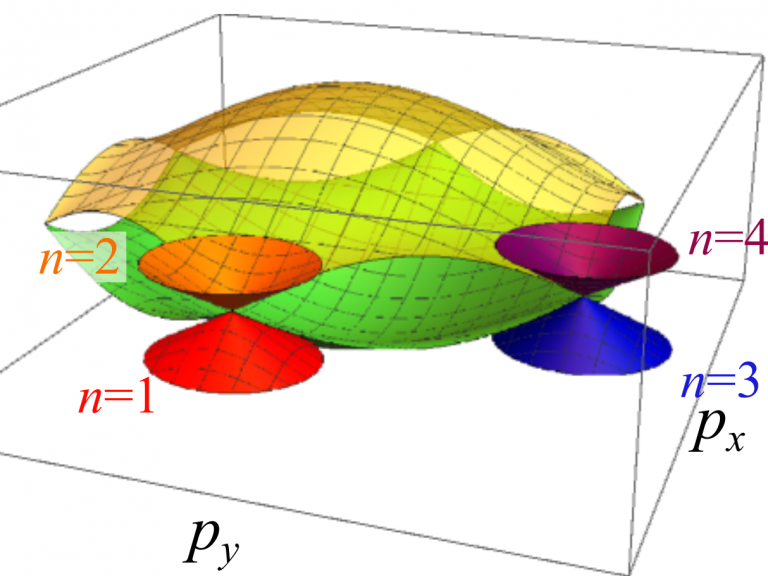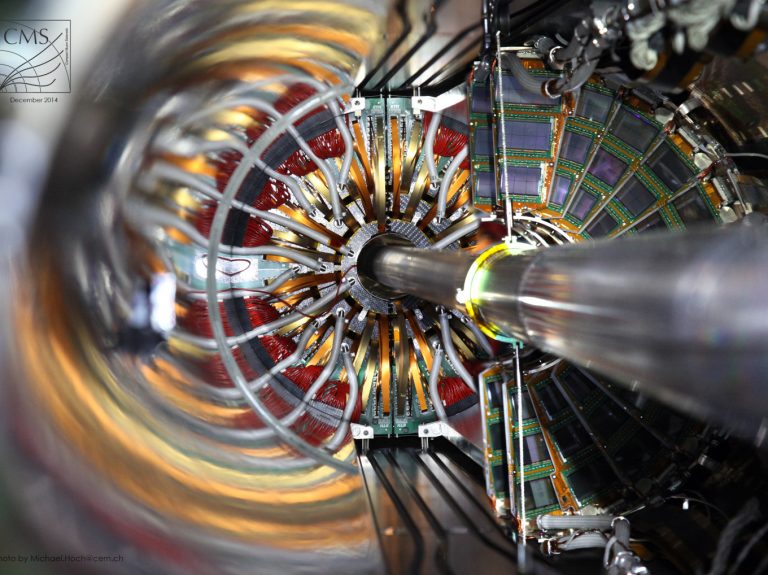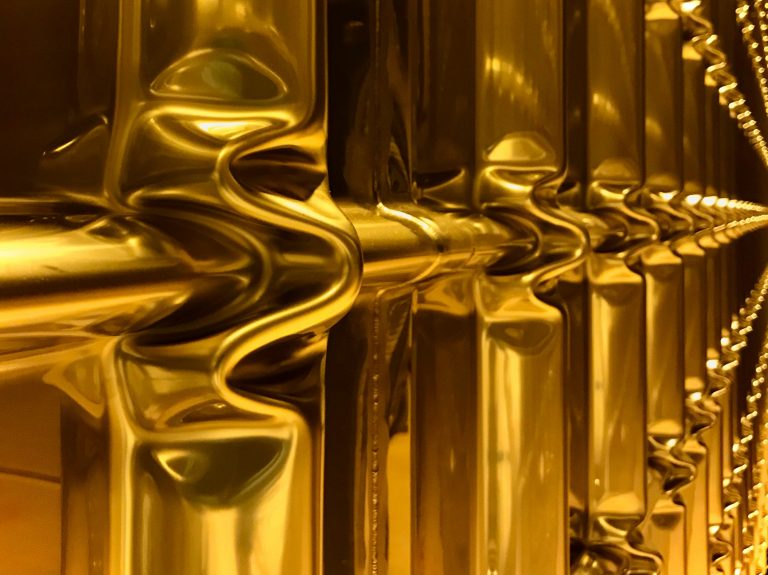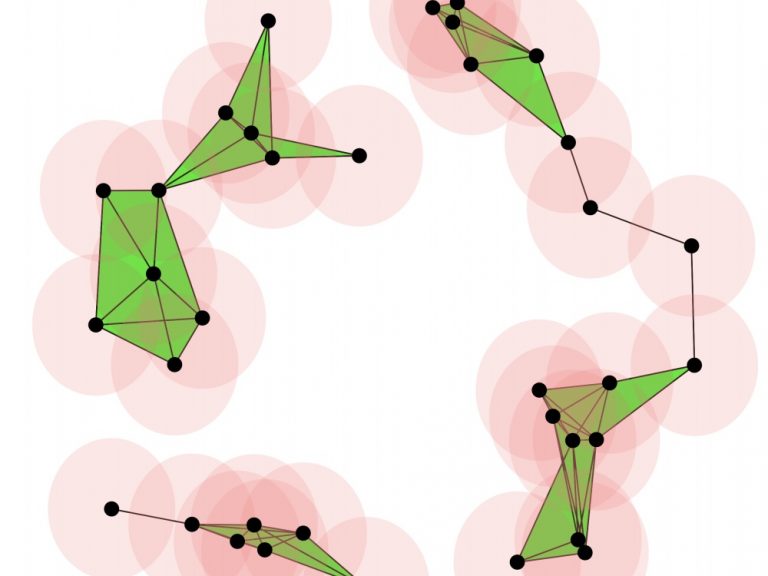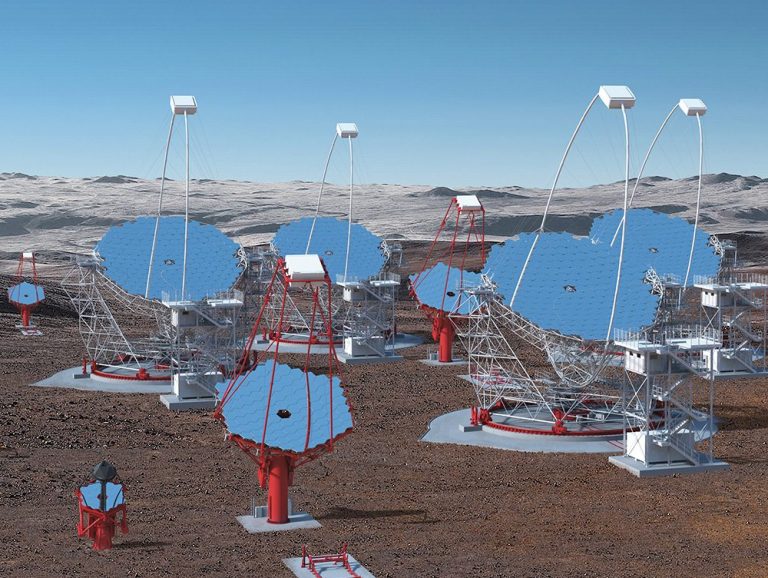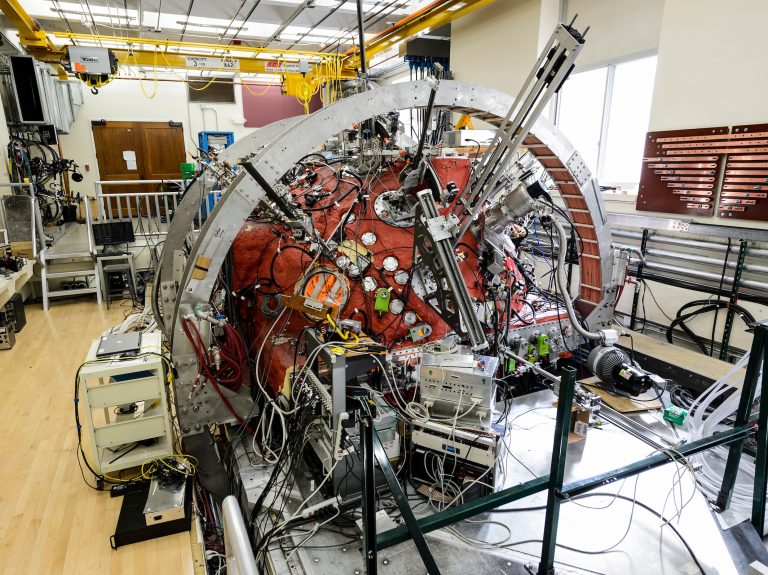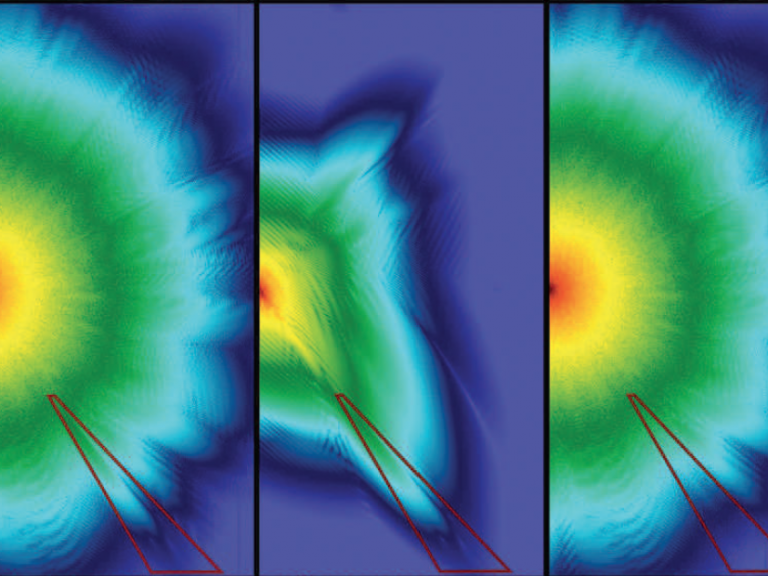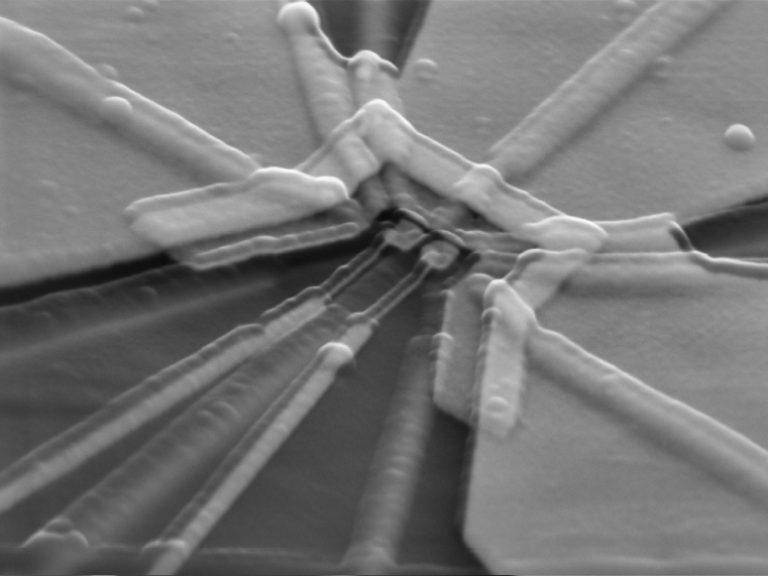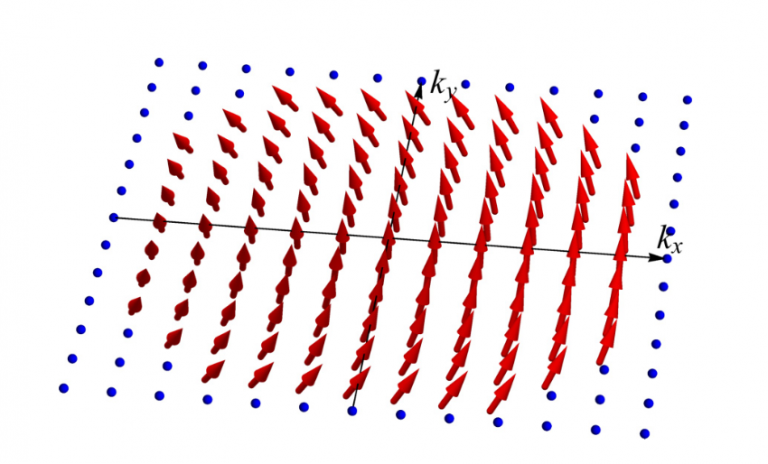The areas of research pursued within the Department of Physics are listed below. To learn about individual faculty members’ research, click on their name or select “expand all” to see all research within the given area. To see a list of related departments, programs, and research facilities across campus, please visit research resources.
Jump to a research area:
- Astrophysics & Cosmology Experiment
- Cosmology Theory
- Atomic, Molecular & Optical
- Biophysics
- Condensed Matter Experiment
- Condensed Matter Theory
- High Energy Experiment
- High Energy Theory
- Machine Learning & AI
- Neutrino & Astroparticle Experiment
- Neutrino & Astroparticle Theory
- Nuclear Theory
- Plasma Experiment
- Plasma Theory
- Quantum Computing Experiment
- Quantum Computing Theory
- Wisconsin IceCube Particle Astrophysics Center (WIPAC)
- Wisconsin Quantum Institute
- X-ray Imaging and Spectroscopy
- Physics Education
- Affiliate Faculty
Astrophysics & Cosmology Experiment
This is an accordion element with a series of buttons that open and close related content panels.
Keith Bechtol | Observational Cosmology
Dark Energy, Dark Matter, Neutrinos, Gravitational Waves: We use the whole Universe as a laboratory to explore the fundamental nature of matter, energy, space, and time. Currently, our research group focuses on construction, operations, and data analysis for wide-area, time-domain optical and near-infrared imaging surveys of the night sky. We often combine our optical survey data with other datasets to conduct multiwavelength and multimessenger analyses. Main projects include the Dark Energy Survey (DES) and Vera C. Rubin Observatory Legacy Survey of Space and Time (LSST).
Bechtol Group Homepage | Keith Bechtol Directory Listing
Stas Boldyrev, Cary Forest, John Sarff, Paul Terry | Plasma Astrophysics
The Wisconsin Plasma Physics Laboratory (WiPPL) operates several multi-investigator, intermediate-scale plasma physics devices, and represents the Plasma Physics efforts within the University of Wisconsin Physics Department. WiPPL serves both UW and external users, and supports the core of a broad research program to understand the flow of energy between fields and particles in plasmas.
WiPPL coordinates the joint operation of the Big Red Plasma Ball (BRB) and Madison Symmetric Torus (MST) devices with a focus on frontier basic plasma science. The combined capabilities of these two devices and their associated infrastructure creates a unique opportunity to lead the world in expanding the basic plasma frontier and to fully realize the extraordinary potential of laboratory experiments to transform space and astrophysical plasma science.
WIPPL homepage
Directory listings: Boldyrev | Forest | Sarff | Terry
Francis Halzen | Analysis of data from the IceCube neutrino observatory
I am a theoretician studying problems at the interface of particle physics, astrophysics and cosmology. Since 1987, I have been working on the AMANDA experiment, a first-generation neutrino telescope at the South Pole. AMANDA observations represented a proof of concept for IceCube, a kilometer-scale observatory. My main interest is to use the beam of high energy neutrinos reaching us from the cosmos discovered by IceCube to identify and image their sources and to study the neutrinos themselves.
Halzen IceCube homepage | Francis Halzen directory listing
Lu Lu | Experimental Particle Astrophysics
I am involved in two particle astrophysics experiments – the IceCube Neutrino Observatory and the Pierre Auger Observatory. The Pierre Auger Observatory is the world’s largest cosmic ray detector and has been making measurements on the highest energy particles in the Universe. These particles are the rarest and typically carry an energy above 10^19 eV, which is much greater than what can be reached by particles accelerated by human technology. After almost 100 years it is still a mystery how the Universe is able to power up those particles. The questions we are trying to answer:
- Where are the highest energy particles from?
- Is the Standard Model still valid at such high energies?
- How does nature accelerate particles so efficiently?
- Could these particles be decay or annihilation products of dark matter?
IceCube homepage | Lu Lu directory listing
Dan McCammon | High Energy Astrophysics: X-ray astronomy
X-ray observation of hot gas in the Universe and Instrumentation development for satellites and sounding rockets.
McCammon Group Homepage | Dan McCammon Directory Listing
Melinda Soares-Furtado | Observational astronomy: stars, exoplanets, exomoons; theoretical models and computational tools
Our team uses observational data (spectroscopic and photometric) and computational simulations to answer questions about stars, exoplanets, and exomoons. Our team is currently working on projects exploring stellar variability; a full-sky investigation of stars in a young, nearby moving group; star-planet interactions; and the search for young exomoons.
Recently, our team led the discovery of the nearest, young Earth-sized planet. This tidally-locked world orbits a Sunlike star in just 4.2 days. We would like to learn more about the heat distribution and atmospheric conditions of this planet using data from JWST and HST.
Soares-Furtado homepage | Melinda Soares-Furtado directory listing
Peter Timbie | Observational Cosmology
Our research group observes the Universe on large scales to find clues about how it began. We detect light emitted at different stages in the evolution of the cosmos to make 3D maps that reach from the Big Bang to the present day. We specialize in developing new hardware and software techniques to detect this ancient light, which comes to us in the form of radio waves and millimeter waves.
Timbie Group homepage | Peter Timbie directory listing
Cosmology Theory
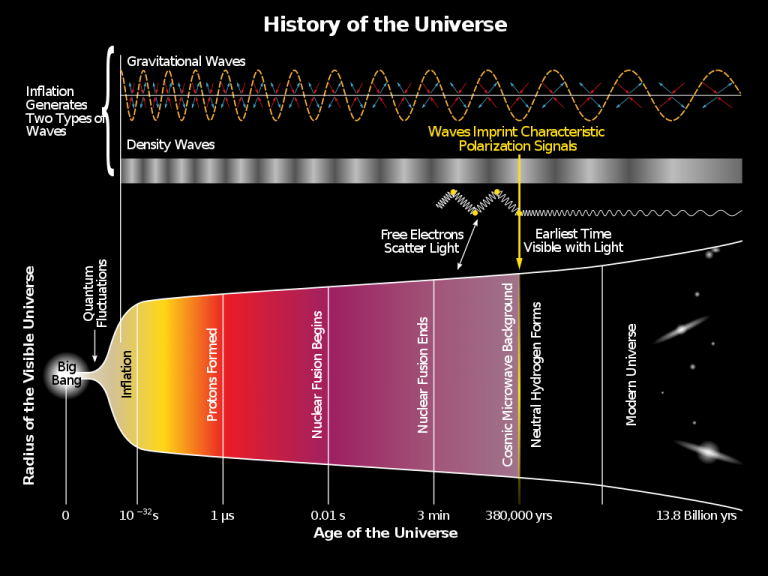
This is an accordion element with a series of buttons that open and close related content panels.
A. Baha Balantekin | Research at the interface of particle, nuclear and astrophysics/cosmology using the tools of quantum information science
Neutrino Cosmology, Big Bang Nucleosynthesis
QuantiSED project | A. Baha Balantekin directory listing
Daniel Chung | Interface of cosmology and high energy theory
My research is at the interface of high energy theory and cosmology. The long term research focus has been to find novel observables that connect these fields with a focus on physics beyond the Standard Model.
Chung homepage | Daniel Chung directory listing
Moritz Münchmeyer | Computational Cosmology, Theoretical Cosmology
We are developing computational and theoretical methods to probe fundamental physics with cosmology. With our methods we are contributing to several experimental collaborations, in particular Simons Observatory, Rubin Observatory and CHIME-FRB. A part of our research is focusing on Machine Learning methods, which have exciting potential for cosmology.
Münchmeyer Group homepage | High Energy Physics | Moritz Münchmeyer directory listing
Gary Shiu | String theory, particle physics, cosmology, and AI
Professor Shiu’s research program is at the interface of string theory, particle physics, and cosmology. His research aims to uncover the laws of nature at the most fundamental level, and apply the insights so obtained to understand and predict observable pheonomena in the domains of high energy physics, astroparticle and cosmology. Major thrusts of his research include developing mechanisms and models from string theory that lead to realistic four-dimensional physics, and finding observables that may teach us theories at very high energies. His research efforts have also drawn him to develop mathematical and data science methods.
Shiu homepage | String Theory | AI and ML | Gary Shiu directory listing
Atomic, Molecular & Optical Physics
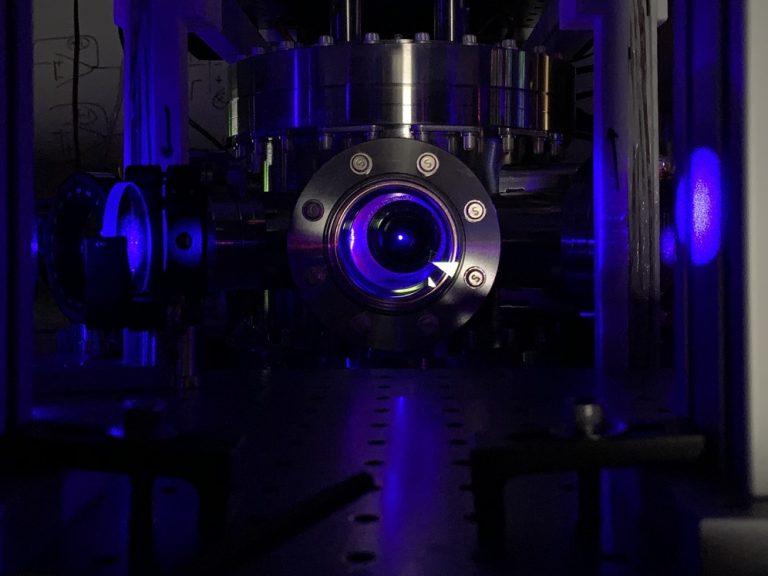
This is an accordion element with a series of buttons that open and close related content panels.
Uwe Bergmann | Nonlinear X-ray Phenomena and New Methods
We excite atoms and molecules with intense ultrafast pulses and explore and control their decay for novel precision measurements. We develop new X-ray techniques to identify and image chemical elements and their speciation. Powerful X-ray lasers and synchrotrons deliver the atomic resolution X-ray Vision.
Bergmann Group homepage | Uwe Bergmann directory listing
Matthew Otten | Open-Quantum Systems
We use high-performance computing to compute properties of AMO systems (such as neutral atom qubits) using the tools of open quantum systems, such as the Lindblad master equation.
Matthew Otten directory listing
Mark Saffman |
Thad Walker |
Deniz Yavuz |
Biophysics
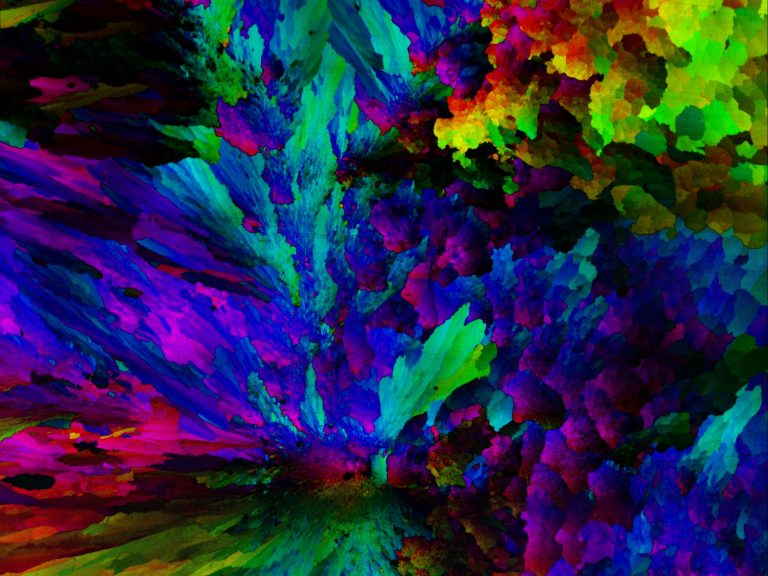
This is an accordion element with a series of buttons that open and close related content panels.
Uwe Bergmann | Real-Time Chemical Reactions and Structural Changes
We observe chemical reactions and structural changes in natural and artificial systems while they take place. We probe advanced 2D materials, metal complexes and metalloproteins, to understand their transformations and how they function. Ultrafast pulses from X-ray lasers and lab sources give us the high-speed X-ray vision to watch the inner workings of electrons, atoms, and molecules in real time.
Bergmann Group homepage | Uwe Bergmann directory listing
Pupa Gilbert | Experimental biophysics and condensed matter with synchrotron spectromicroscopies
My group and I are interested in biomineralization, that is, in understanding the formation mechanisms, physical nanoscale structure, composition, and materials properties of natural biominerals. These include coral skeletons, sea urchin spines, mollusk shell nacre, and tooth enamel.
Gilbert Group homepage | Pupa Gilbert directory listing
Thad Walker |
Condensed Matter Experiment
This is an accordion element with a series of buttons that open and close related content panels.
Victor Brar |
We probe the electronic, magnetic, and optical behavior of materials at the atomic-scale in search of new phenomena that have both fundamental and technological importance. Examples of such effects include highly localized plasmonic modes, long-range magnetic interactions, and deep impurity states. The types of behavior we search for are general and manifest in many types of systems, but they often occur most dramatically in exotic materials that exhibit quantum effects and in low dimensional materials with strong electron interactions. When new behavior is discovered locally, we use large-scale lithographic methods to structure the host material, such that those phenomena can manifest macroscopically in ways that can be utilized for new device applications.
Brar Lab Homepage | Victor Brar directory listing
Mark Eriksson | Quantum computing and semiconductor physics
The Eriksson Group focuses on semiconductor quantum dot qubits, quantum computing and information, quantum measurement, nanostructure fabrication, thermal transport, semiconductor physics, and the interface between semiconducting and superconducting quantum science and technology.
Eriksson Group Homepage | Mark Eriksson directory listing
Pupa Gilbert | Experimental biophysics and condensed matter with synchrotron spectromicroscopies
My group and I are interested in biomineralization, that is, in understanding the formation mechanisms, physical nanoscale structure, composition, and materials properties of natural biominerals. These include coral skeletons, sea urchin spines, mollusk shell nacre, and tooth enamel.
Gilbert Group homepage | Pupa Gilbert directory listing
Roman Kuzmin | Quantum simulations with superconducting circuits
We explore the dynamics of large-scale superconducting circuits for applications in quantum simulations, quantum computing, and metrology. Our focus areas include simulations of strongly correlated systems, quantum phase transitions, the effects of decoherence in superconducting qubits, and quantum optics.
Roman Kuzmin directory listing
Robert McDermott | Superconducting Quantum Computing
We develop tools to allow scaling of superconducting quantum circuits to arrays comprising thousands or millions of qubits, as needed for robust quantum error correction. We have separate research efforts in the areas of quantum coherence, quantum measurement, and high-fidelity coherent control. In addition, we are working with collaborators to develop hybrid quantum systems that capitalize on the distinct strengths of disparate quantum technologies.
McDermott Group homepage | Robert McDermott directory listing
Mark Rzchowski | Electronic, spintronic, and structural correlations in complex thin film systems
My research focuses on strong correlations and nanoscale physics at interfaces in thin-film heterostructures of complex materials. The effects range from new electronic phases existing at the interface, to novel coupling of strong correlations across an interface between epitaxial films with magnetic, ferroelectric, superconducting, or ferroelastic order. These are complex systems at the forefront of research in growth, measurement, and theoretical analysis that probe open questions in strongly correlated electronic systems. My group’s experimental measurements of electronic, spintronic, magnetic, and structural properties has resulted in collaborative publications with film growers, electron microscopists, and condensed matter theorists. Recent work discusses charge-spin conversion, noncollinear antiferromagnetism, magnetoelectric coupling, and two-dimensional physics.
Mark Rzchowski directory listing
Tiancheng Song | 2D Quantum Materials
We are a new research group focusing on exploring novel 2D quantum materials and their van der Waals heterostructures. We are particularly interested in studying exotic 2D magnetism, 2D superconductivity, and topology by using various techniques, such as nanodevice fabrication, magneto-optics, quantum transport, thermoelectrics, optoelectronics, optical spectroscopy and microscopy.
Song group homepage | Tiancheng Song directory listing
Condensed Matter Theory
This is an accordion element with a series of buttons that open and close related content panels.
Ilya Esterlis | Characterizing phases of matter in many-body quantum systems
Condensed matter theorist, broadly interested in characterizing phases of matter arising in many-body quantum systems. My work is inspired both by close collaboration with experimental colleagues, as well as more formal questions regarding the organizing principles governing the phase diagrams of materials. Current lines of investigation include:
- Understanding the optimal conditions for superconductivity in solid-state systems.
- Analyzing novel phenomena and phases in two dimensional electron-gases (2DEGs), such as electron crystals in atomically thin semiconductors.
- Utilization of spin waves (magnons) as probe particles to interrogate mesoscopic condensed matter systems.
Ilya Esterlis directory listing
Mark Friesen | Semiconductor and quantum devices
The Friesen Group focuses on the theory and simulation of semiconducting and superconducting qubits. Our work is at the interface between Materials Science, Condensed Matter, and Quantum Computing. Particular emphasis is given to quantum dot qubits, and we work closely with experimental groups here at UW and around the world.
Friesen Group Homepage | Mark Friesen directory listing
Bob Joynt | Quantum Computing and Condensed Matter Theory
The Joynt research group works in a number of different areas of theoretical physics, but particularly in quantum computing and condensed matter physics.
In condensed matter theory, some recent projects have included discrete scale invariance in topological materials and optical properties of unconventional superconductors.
Joynt Group Homepage | Bob Joynt directory listing
Elio König | Quantum materials and devices: transport and correlation effects
Stimulated by the synergies between quantum information science and quantum materials theory, the König research group focuses on the following topics:
- Exotic 2D quantum materials: Quantum spin liquids and their experimental probes.
- Metals without sharp electrons: Fractionalization and non-Fermi liquids.
- Strong correlations in topological insulators and superconductors: Towards the constructive design of long-range entanglement.
- Mesoscopic quantum impurity problems: Anyons in multi-channel Kondo devices and beyond.
- Hardware of quantum computers: New building blocks for circuit QED.
König homepage | Elio König directory listing
Alex Levchenko | Quantum kinetics, mesoscopic physics, nonequilibrium systems, superconductivity, topological materials
Active research projects include (i) anomalous and nonlinear Hall effects in topological semimetals; (ii) quantum criticality in superconductors; (iii) electronic hydrodynamics; (iv) proximity and Josephson effects in multiterminal circuits.
Alex Levchenko directory listing
Maxim Vavilov | Out-of-equilibrium many body systems
My research focuses in the area of theoretical condensed matter physics. I study transport and non-equilibrium phenomena in quantum many particle systems, as well as the role of disorder and chaos in the quantum limit. My research is related to problems motivated by experimental investigation of mesoscopic and nanoscale electron systems and intended for future development of electronics and quantum information technologies.
Vavilov Group Homepage | Maxim Vavilov directory listing
Benjamin Woods | Semiconductor quantum dots and topological superconductivity
My research focuses on the interplay of many-body, spin-orbit, valley, and g-factor physics of semiconductor quantum dots towards applications for spin qubits. I also research semiconductor-superconductor hybrids with an emphasis on the realization of topological superconductivity and Majorana zero modes for topological quantum computing. Some current research topics include:
- Utilizing spin-orbit coupling and multi-electron occupancy for enhanced spin manipulation in quantum dot arrays.
- Designing semiconductor-superconductor heterostructures for the realization of topological superconductivity in the absence of a magnetic field.
- Non-Abelian Berry phases in quantum dots
Benjamin Woods homepage | Benjamin Woods directory listing
High Energy Experiment
This is an accordion element with a series of buttons that open and close related content panels.
Kevin Black | Particle Physics at the Energy Frontier
The UW group of Profs Kevin Black, Tulika Bose, Sridhara Dasu and Matt Herndon continues its active leadership roles in the Compact Muon Solenoid (CMS) experiment at the LHC, as we explore proton-proton collisions at 13 TeV and prepare for future higher luminosity running. The UW group is leading physics analyses in characterization of the Higgs Boson, searches for its potential partners, searches for particle dark matter, and extensive studies of Electroweak phenomena. The UW group built, commissioned, operates, and upgrades major parts of CMS: the trigger system, including the Level-1 (L1) calorimeter trigger and higher level triggers (HLT), the endcap muon system (EMU), including its infrastructure and cathode strip chambers (CSCs) and Gas Electron Multiplier (GEMs), software for simulation and event processing, and a leading Tier-2 computing facility.
CMS Experiment page | Kevin Black directory listing
Tulika Bose | Particle Physics at the Energy Frontier
The UW group of Profs Kevin Black, Tulika Bose, Sridhara Dasu and Matt Herndon continues its active leadership roles in the Compact Muon Solenoid (CMS) experiment at the LHC, as we explore proton-proton collisions at 13 TeV and prepare for future higher luminosity running. The UW group is leading physics analyses in characterization of the Higgs Boson, searches for its potential partners, searches for particle dark matter, and extensive studies of Electroweak phenomena. The UW group built, commissioned, operates, and upgrades major parts of CMS: the trigger system, including the Level-1 (L1) calorimeter trigger and higher level triggers (HLT), the endcap muon system (EMU), including its infrastructure and cathode strip chambers (CSCs) and Gas Electron Multiplier (GEMs), software for simulation and event processing, and a leading Tier-2 computing facility.
CMS Experiment page | Tulika Bose HEP page | Tulika Bose directory listing
Duncan Carlsmith | High Energy Experiment
My research in experimental elementary particle physics has spanned proton-proton collisions at the Compact Muon Solenoid at the CERN Large Hadron Collider, a search for WIMP dark matter with the LZ two-phase liquid xenon detector at SURF, and proton-antiproton collisions at the Collider Detector Facility and Tevatron at Fermilab.
Duncan Carlsmith directory listing
Kyle Cranmer | Particle Physics at the Energy Frontier
Kyle Cranmer leads a group on the ATLAS experiment that has made major contributions to discovery of the Higgs boson and the subsequent measurement of its properties. The group has a strong focus in developing advanced data analysis techniques that leverage and advance statistics, machine learning, and data science. The group’s physics effort focus on two primarily topics. The first is to use simulation-based inference to enhance the sensitivity to new physics through Effective Field Theory (EFT) measurements. The second is to build a large catalogue of validated analysis pipelines preserved in the RECAST framework and leverage that catalogue to more systematically explore the large space of beyond-the-standard model theories.
Data Science Institute | IRIS-HEP | Theory and Practice | Kyle Cranmer directory listing
Sridhara Dasu | Particle Physics at the Energy Frontier
The UW group of Profs Kevin Black, Tulika Bose, Sridhara Dasu and Matt Herndon continues its active leadership roles in the Compact Muon Solenoid (CMS) experiment at the LHC, as we explore proton-proton collisions at 13 TeV and prepare for future higher luminosity running. The UW group is leading physics analyses in characterization of the Higgs Boson, searches for its potential partners, searches for particle dark matter, and extensive studies of Electroweak phenomena. The UW group built, commissioned, operates, and upgrades major parts of CMS: the trigger system, including the Level-1 (L1) calorimeter trigger and higher level triggers (HLT), the endcap muon system (EMU), including its infrastructure and cathode strip chambers (CSCs) and Gas Electron Multiplier (GEMs), software for simulation and event processing, and a leading Tier-2 computing facility.
CMS Experiment page | Sridhara Dasu directory listing
Matt Herndon | Experimental elementary particle physics and applications of Machine Learning
My research interests lie in the frontier of fundamental physics. High Energy Physics (HEP) offers some of the most interesting experimental opportunities to expand our knowledge of fundamental physics and discover new physics phenomena. I am simultaneously interested in pursuing a greater understanding of the Standard Model (SM) and in studying the predictions of theories that pose solutions to the fundamental questions not answered by the SM of particle physics. These questions include, but are not limited to, the exact nature of Electroweak Symmetry breaking and how the SM particles acquire mass, how to unify gravity with the other fundamental forces and the nature of dark matter. These questions have led me to pursue a diverse research program including elements such as measurements of SM cross sections, SM Higgs boson searches, searches for new physics particles such as very massive vector bosons, and the scattering of multiple gauge bosons. The unifying theme of this research effort is searches for pairs of SM bosons with decays to leptons. I am also interested in the applications of machine learning to analysis, particle identification, and algorithms for triggering and reconstruction.
Herndon homepage | High Energy Physics | CMS Experiment | Matthew Herndon directory listing
Albrecht Karle | Experimental neutrino astronomy, neutrino astrophysics
Cosmic neutrinos are a unique tool to study the non-thermal, high energy Universe. At energies above 10 TeV, cosmic rays and gamma rays are obstructed by various absorption processes. With IceCube, we were able to discover and characterize a cosmic neutrino flux. What are the sources, what is the precise flux and flavor composition between 1 TeV and 1000 PeV? Much is still to be learned. The radio detection method (ARA, RNO) is exploring the highest energies. I am also working on the next generation experiment, IceCube-Gen2.
Neutrino astronomy with IceCube | Detection of cosmic neutrinos with radio detectors | Albrecht Karle directory listing
Yibin Pan |
Brian Rebel | Accelerator-based experimental neutrino physics
The Wisconsin accelerator-based experimental neutrino physics group acts to investigate rare processes by creating very intense beams of particles that allow the probing of those processes. The group is active in the NOvA and DUNE experiments, which use the most intense beams of neutrinos in the world to understand neutrino oscillations. Neutrino oscillations are the changing of neutrinos from one type into another as they propagate from their point of production. Neutrino oscillations may be able to explain the origin of our matter-dominated Universe.
Rebel Group homepage | Brian Rebel directory listing
Sau Lan Wu |
High Energy Theory
This is an accordion element with a series of buttons that open and close related content panels.
Yang Bai | Particle phenomenology
I am a theoretical particle physicist and interested in understanding how the Universe works at both microscopic and macroscopic scales. My research topics contain dark matter, black hole, neutrino, collider and early universe physics.
Bai homepage | Yang Bai directory listing
A. Baha Balantekin | Research at the interface of particle, nuclear and astrophysics/cosmology using the tools of quantum information science
Neutrino properties in and beyond the Standard Model, dark matter detection
QuantiSED project | A. Baha Balantekin directory listing
Vernon Barger | Particle physics phenomenology
My research in high-energy physics is at the interface of theory and experiment, with emphasis on the interpretation of experimental data and the construction and testing of theoretical models. The scope of the work is data-driven and encompasses collider physics, neutrino physics, physics beyond the Standard Model, and particle astrophysics cosmology.
Phenomenology | Vernon Barger directory listing
Daniel Chung | Interface of high energy theory and cosmology
My research is at the interface of high energy theory and cosmology. The long term research focus has been to find novel observables that connect these fields with a focus on physics beyond the Standard Model.
Chung homepage | Daniel Chung directory listing
Lisa Everett | Phenomenology, Physics beyond the Standard Model
My research program in theoretical high energy physics focuses on seeking connection between observable particle physics and the domain of fundamental theory. The goals are to understand and improve the extent to which the current and anticipated data from collider, cosmological, and neutrino detection experiments can probe physics beyond the Standard Model at the TeV scale and beyond.
Everett homepage | Phenomenology | Lisa Everett diretory listing
Francis Halzen | Study of the properties and sources of high energy cosmic neutrinos
I am a theoretician studying problems at the interface of particle physics, astrophysics and cosmology. Since 1987, I have been working on the AMANDA experiment, a first-generation neutrino telescope at the South Pole. AMANDA observations represented a proof of concept for IceCube, a kilometer-scale observatory. My main interest is to use the beam of high energy neutrinos reaching us from the cosmos discovered by IceCube to identify and image their sources and to study the neutrinos themselves.
Halzen IceCube homepage | Francis Halzen directory listing
Akikazu Hashimoto |
Gary Shiu | String theory, particle physics, and cosmology, and AI
Professor Shiu’s research program is at the interface of string theory, particle physics, and cosmology. His research aims to uncover the laws of nature at the most fundamental level, and apply the insights so obtained to understand and predict observable pheonomena in the domains of high energy physics, astroparticle and cosmology. Major thrusts of his research include developing mechanisms and models from string theory that lead to realistic four-dimensional physics, and finding observables that may teach us theories at very high energies. His research efforts have also drawn him to develop mathematical and data science methods.
Shiu homepage | String Theory | AI and ML | Gary Shiu directory listing
Machine Learning and AI
This is an accordion element with a series of buttons that open and close related content panels.
Tulika Bose, Sridhara Dasu | Extracting Exciting Particle Physics Signatures from the Impending Data Deluge
Machine learning techniques are used by the members of the CMS group led by Profs. Bose and Dasu for improving the sensitivity of new physics searches and increasing the accuracy of measurements.
Further machine learning techniques are being developed to more efficiently select events online using auto-encoders, using massively parallel processors used in the trigger systems. Because the event selection code is processed on GPUs and FPGAs ML techniques for usage on such resources is under investigation.
Tulika Bose HEP page | Tulika Bose directory listing | Sridhara Dasu directory listing
Kyle Cranmer | Machine Learning in the Physical Sciences
Cranmer has established himself as a leading figure on the interplay of machine learning and the physical sciences. He is the Editor in Chief of the journal Machine Learning: Science and Technology, co-authored the Particle Data Group’s chapter on machine learning, and co-founded the Machine Learning for Physical Sciences workshop series at NeurIPS. His research interests include simulation-based inference, which leverages advances in deep learning to enable statistical inference in situations that were previously intractable. He has also explored a variety of techniques to incorporate physics knowledge and insight into machine learning architectures and training procedures. He has applied these techniques to a wide range of problems including high energy particle physics, astroparticle physics, cosmology, quantum many body physics, and lattice quantum chromodynamics.
Data Science Institute | IRIS-HEP | Theory and Practice | Kyle Cranmer directory listing
Matthew Herndon | Experimental elementary particle physics and applications of Machine Learning
My research interests lie in the frontier of fundamental physics. High Energy Physics (HEP) offers some of the most interesting experimental opportunities to expand our knowledge of fundamental physics and discover new physics phenomena. I am simultaneously interested in pursuing a greater understanding of the Standard Model (SM) and in studying the predictions of theories that pose solutions to the fundamental questions not answered by the SM of particle physics. These questions include, but are not limited to, the exact nature of Electroweak Symmetry breaking and how the SM particles acquire mass, how to unify gravity with the other fundamental forces and the nature of dark matter. These questions have led me to pursue a diverse research program including elements such as measurements of SM cross sections, SM Higgs boson searches, searches for new physics particles such as very massive vector bosons, and the scattering of multiple gauge bosons. The unifying theme of this research effort is searches for pairs of SM bosons with decays to leptons. I am also interested in the applications of machine learning to analysis, particle identification, and algorithms for triggering and reconstruction.
Herndon homepage | High Energy Physics | CMS Experiment | Matthew Herndon directory listing
Moritz Münchmeyer | Machine Learning for Cosmology
We are developing computational and theoretical methods to probe fundamental physics with cosmology. With our methods we are contributing to several experimental collaborations, in particular Simons Observatory, Rubin Observatory and CHIME-FRB. A part of our research is focusing on Machine Learning methods, which have exciting potential for cosmology.
Münchmeyer Group homepage | Moritz Münchmeyer directory listing
Matthew Otten | Quantum Machine Learning and Machine Learning for Quantum Information
We develop quantum algorithms to accomplish machine learning tasks and use classical machine learning methods to build better quantum devices, in, for example, quantum optimal control or quantum tomography.
Matthew Otten directory listing
Gary Shiu | String theory, particle physics, cosmology, and AI
Professor Shiu’s research program is at the interface of string theory, particle physics, and cosmology. His research aims to uncover the laws of nature at the most fundamental level, and apply the insights so obtained to understand and predict observable pheonomena in the domains of high energy physics, astroparticle and cosmology. Major thrusts of his research include developing mechanisms and models from string theory that lead to realistic four-dimensional physics, and finding observables that may teach us theories at very high energies. His research efforts have also drawn him to develop mathematical and data science methods.
Shiu homepage | String Theory | Gary Shiu directory listing
Maxim Vavilov | Characterization and optimization of quantum devices
A project in Maxim Vavilov’s group aims to develop a neural network that analyzes energy spectra of a superconducting device, such as the transom or fluxonium qubit and predicts microscopic parameters of the qubit. In the case of fluxonium, we analyze the spectrum as a function of the magnetic flux through the superconductor. Our research demonstrated that even a magnetic flux dispersion curve of a single 0-1 transition provides an accurate estimate for the three energy scales of the fluxonium: charging, inductive, and Josephson energies. The inclusion of higher energy transitions makes such predictions better. Our next steps are to analyze spectra of multiple fluxoniums and make predictions for optimized single and two-quits gates for the fluxonium systems.
Vavilov Group Homepage | Maxim Vavilov directory listing
Neutrino & Astroparticle Physics Experiment
This is an accordion element with a series of buttons that open and close related content panels.
Ke Fang | Multi-messenger Astrophysics with Cosmic Particles
We collect various types of messengers sent by the Universe and use them to understand how nature works. In particular, we observe with the gamma-ray telescopes HAWC and Fermi-LAT, and the neutrino observatory IceCube. We also run numerical simulations to study the theory of high-energy emission by black holes and neutron stars.
IceCube | HAWC | Ke Fang directory listing
Francis Halzen | Analysis of data from the IceCube neutrino observatory
I am a theoretician studying problems at the interface of particle physics, astrophysics and cosmology. Since 1987, I have been working on the AMANDA experiment, a first-generation neutrino telescope at the South Pole. AMANDA observations represented a proof of concept for IceCube, a kilometer-scale observatory. My main interest is to use the beam of high energy neutrinos reaching us from the cosmos discovered by IceCube to identify and image their sources and to study the neutrinos themselves.
Halzen IceCube homepage | Francis Halzen directory listing
Kael Hanson | Instrumentation Development
Detectors of high energy particles of astrophysical origin are specialized to the context of each experiment, occupying enormous volumes to detect weak fluxes and/or accommodating installation in exotic milieu. My research focuses on development of such instruments as well as their application to civilian and defense problems.
IceCube | Kael Hanson directory listing
Albrecht Karle | Experimental neutrino astronomy, neutrino astrophysics
Cosmic neutrinos are a unique tool to study the non-thermal, high energy Universe. At energies above 10 TeV, cosmic rays and gamma rays are obstructed by various absorption processes. With IceCube, we were able to discover and characterize a cosmic neutrino flux. What are the sources, what is the precise flux and flavor composition between 1 TeV and 1000 PeV? Much is still to be learned. The radio detection method (ARA, RNO) is exploring the highest energies. I am also working on the next generation experiment, IceCube-Gen2.
Neutrino astronomy with IceCube | Detection of cosmic neutrinos with radio detectors | Albrecht Karle directory listing
Lu Lu | Experimental Particle Astrophysics
I am involved in two particle astrophysics experiments – the IceCube Neutrino Observatory and the Pierre Auger Observatory. The Pierre Auger Observatory is the world’s largest cosmic ray detector and has been making measurements on the highest energy particles in the Universe. These particles are the rarest and typically carry an energy above 10^19 eV, which is much greater than what can be reached by particles accelerated by human technology. After almost 100 years it is still a mystery how the Universe is able to power up those particles. The questions we are trying to answer:
- Where are the highest energy particles from?
- Is the Standard Model still valid at such high energies?
- How does nature accelerate particles so efficiently?
- Could these particles be decay or annihilation products of dark matter?
IceCube homepage | Lu Lu directory listing
Brian Rebel | Accelerator-based experimental neutrino physics
The Wisconsin accelerator-based experimental neutrino physics group acts to investigate rare processes by creating very intense beams of particles that allow the probing of those processes. The group is active in the NOvA and DUNE experiments, which use the most intense beams of neutrinos in the world to understand neutrino oscillations. Neutrino oscillations are the changing of neutrinos from one type into another as they propagate from their point of production. Neutrino oscillations may be able to explain the origin of our matter-dominated Universe.
Rebel Group homepage | Brian Rebel directory listing
Justin Vandenbroucke |
Neutrino & Astroparticle Physics Theory
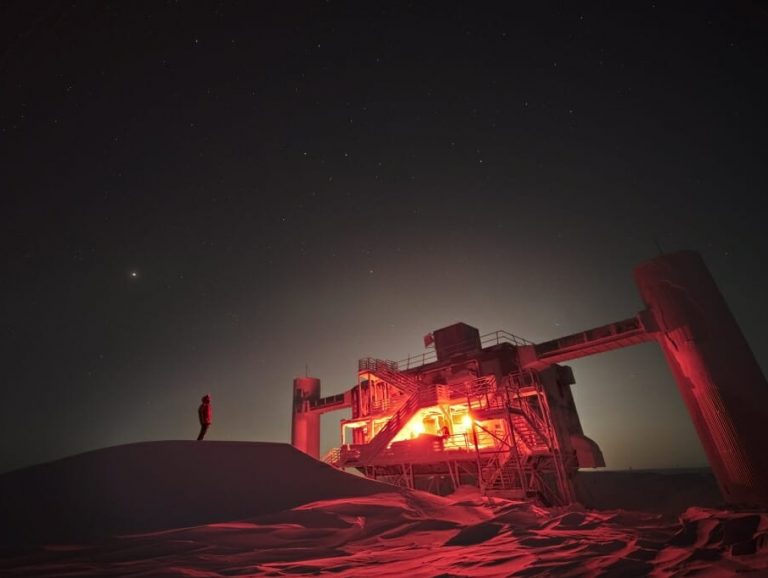
This is an accordion element with a series of buttons that open and close related content panels.
A. Baha Balantekin | Research at the interface of particle, nuclear and astrophysics/cosmology using the tools of quantum information science
Neutrinos from core-collapse supernovae and neutron-star mergers, role of neutrinos and axions in stellar evolution
QuantiSED project | A. Baha Balantekin directory listing
Yang Bai | Particle phenomenology
I am a theoretical particle physicist and interested in understanding how the Universe works at both microscopic and macroscopic scales. My research topics contain dark matter, black hole, neutrino, collider and early universe physics.
Bai homepage | Yang Bai directory listing
Vernon Barger |
Daniel Chung
Lisa Everett | Phenomenology, Physics beyond the Standard Model
My research program in theoretical high energy physics focuses on seeking connection between observable particle physics and the domain of fundamental theory. The goals are to understand and improve the extent to which the current and anticipated data from collider, cosmological, and neutrino detection experiments can probe physics beyond the Standard Model at the TeV scale and beyond.
Everett homepage | Phenomenology | Lisa Everett diretory listing
Francis Halzen | Study of the properties and sources of high energy cosmic neutrinos
I am a theoretician studying problems at the interface of particle physics, astrophysics and cosmology. Since 1987, I have been working on the AMANDA experiment, a first-generation neutrino telescope at the South Pole. AMANDA observations represented a proof of concept for IceCube, a kilometer-scale observatory. My main interest is to use the beam of high energy neutrinos reaching us from the cosmos discovered by IceCube to identify and image their sources and to study the neutrinos themselves.
Halzen IceCube homepage | Francis Halzen directory listing
Akikazu Hashimoto |
Nuclear Theory
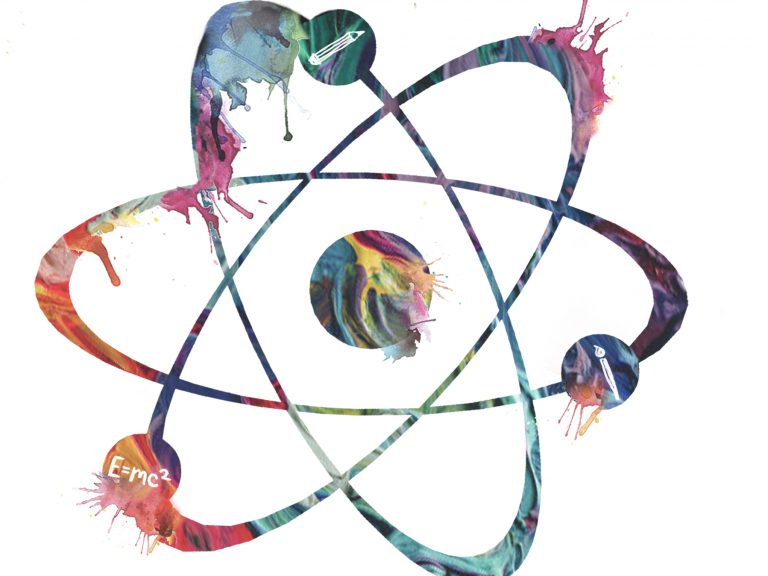
This is an accordion element with a series of buttons that open and close related content panels.
A. Baha Balantekin | Research at the interface of particle, nuclear and astrophysics/cosmology using the tools of quantum information science
Nuclear astrophysics, nuclear structure and reactions
A. Baha Balantekin directory listing
Plasma Physics Experiment
This is an accordion element with a series of buttons that open and close related content panels.
Stas Boldyrev |
Jan Egedal |
Cary Forest |
John Sarff | Experimental plasma physics
Prof. Sarff’s research interests are primarily toroidal magnetically confined plasmas. This includes fusion energy and basic plasma science, especially self-organizing dynamics and their connections to astrophysical plasmas through processes such as magnetic reconnection, particle heating and energization, and turbulence and transport. See the WiPPL website for more details and recent publications.
John Sarff directory listing
Plasma Physics Theory
This is an accordion element with a series of buttons that open and close related content panels.
Stas Boldyrev |
Jan Egedal |
Rogerio Jorge | Design of Fusion Reactors
The quest for practical and economically viable fusion devices demands innovative approaches to overcome design challenges. In my group, we apply novel techniques to find new designs of fusion reactors. This includes the optimization of magnetic fields, plasma dynamics and coils. The type of machines we focus are tokamaks (an axisymmetric torus) and stellarators (devices with steady-state capabilities). Some of the techniques include optimization, neural networks and automatic differentiation.
Jorge Group Homepage | Rogerio Jorge directory listing
Paul Terry | Fusion Plasma Theory, Plasma Astrophysics
Fusion Plasma Theory
Turbulence and transport in magnetically confined plasmas, including multiscale interactions in magnetically active turbulence; physics of transport reduction processes, including suppression by mean shear flow and enhanced coupling to large-scale sinks; mechanisms for turbulent saturation of plasma instabilities, including large-scale stable modes; time dependent behavior in saturation; application of saturation mechanisms to optimization of 3D field design for transport reduction in stellarators.
Plasma astrophysics
Interstellar turbulence; intermittency in small scale kinetic Alfvén wave turbulence and effect on pulsar scintillation; shear flow instability in magnetohydrodynamic plasmas; effect of stable modes in instability driven astrophysical turbulence on magnetic field generation and small-scale excitation.
Paul Terry directory listing
Vladimir Zhdankin | Plasma astrophysics and nonequilibrium statistical mechanics
My group applies theoretical and computational approaches to investigate problems at the interface between plasma physics, astrophysics, space physics, and statistical physics. We apply numerical methods, including massively parallel kinetic simulations, to study multiscale plasma processes such as turbulence, magnetic reconnection, dynamo, and instabilities from first principles. This work is motivated by high-energy astrophysical systems (such as black-hole accretion flows and jets), which necessitate an understanding of collisionless plasmas in extreme physical regimes (having exotic compositions, relativistic particles, and intense radiation). We gain insights into modeling these astrophysical systems from lower-energy space plasmas (such as the solar corona and wind) and laboratory plasma experiments (such as at the Wisconsin Plasma Physics Laboratory). Because collisionless plasmas exist in states far from local thermal equilibrium, exhibiting anisotropies and nonthermal particle acceleration, we develop analytical approaches from nonequilibrium statistical mechanics to describe particle distributions and energy dissipation.
Zhdankin Group homepage | Vladimir Zhdankin directory listing
Ellen Zweibel | Plasma Astrophysics
I work in theoretical astrophysics, and specialize in plasma astrophysics. I’m interested in the origin and evolution of astrophysical magnetic fields, cosmic rays, and the basic plasma processes that transfer energy between fields and particles. These interests come together in the accompanying figure, which shows a numerical simulation of cosmic rays propagating through a simple model of the magnetized, clumpy, interstellar medium. Cosmic rays pressure builds up behind the clumps and pushes them outward. The simulation was performed by Chad Bustard (PhD 2020) and published in the Astrophysical Journal (Bustard & Zweibel 2021).
Ellen Zweibel directory listing
Quantum Computing Experiment
This is an accordion element with a series of buttons that open and close related content panels.
Mark Eriksson | Quantum computing and semiconductor physics
The Eriksson Group focuses on semiconductor quantum dot qubits, quantum computing and information, quantum measurement, nanostructure fabrication, thermal transport, semiconductor physics, and the interface between semiconducting and superconducting quantum science and technology.
Eriksson Group Homepage | Mark Eriksson directory listing
Roman Kuzmin | Quantum simulations with superconducting circuits
We explore the dynamics of large-scale superconducting circuits for applications in quantum simulations, quantum computing, and metrology. Our focus areas include simulations of strongly correlated systems, quantum phase transitions, the effects of decoherence in superconducting qubits, and quantum optics.
Roman Kuzmin directory listing
Robert McDermott | Superconducting Quantum Computing
We develop tools to allow scaling of superconducting quantum circuits to arrays comprising thousands or millions of qubits, as needed for robust quantum error correction. We have separate research efforts in the areas of quantum coherence, quantum measurement, and high-fidelity coherent control. In addition, we are working with collaborators to develop hybrid quantum systems that capitalize on the distinct strengths of disparate quantum technologies.
McDermott Group homepage | Robert McDermott directory listing
Mark Saffman |
Thad Walker |
Quantum Computing Theory
This is an accordion element with a series of buttons that open and close related content panels.
A. Baha Balantekin | Research at the interface of particle, nuclear and astrophysics/cosmology using the tools of quantum information science
Algorithms for nuclear, particle and astrophysics/cosmology
QuantiSED project | A. Baha Balantekin directory listing
Mark Friesen | Spin qubits
The Friesen Group focuses on the theory and simulation of semiconducting and superconducting qubits. Our work is at the interface between Materials Science, Condensed Matter, and Quantum Computing. Particular emphasis is given to quantum dot qubits, and we work closely with experimental groups here at UW and around the world.
Friesen Group Homepage | Mark Friesen directory listing
Bob Joynt | Quantum Computing and Condensed Matter Theory
The Joynt research group works in a number of different areas of theoretical physics, but particularly in quantum computing and condensed matter physics.
In quantum computing the main areas are quantum algorithms, general theory of quantum correlations, decoherence with an emphasis on evanescent-wave Johnson noise, quantum error correction, and new designs for electron spin qubit structures.
In condensed matter theory, some recent projects have included discrete scale invariance in topological materials and optical properties of unconventional superconductors.
Joynt Group Homepage | Bob Joynt directory listing
Elio König | Quantum materials and devices: transport and correlation effects
Stimulated by the synergies between quantum information science and quantum materials theory, the König research group focuses on the following topics:
- Exotic 2D quantum materials: Quantum spin liquids and their experimental probes.
- Metals without sharp electrons: Fractionalization and non-Fermi liquids.
- Strong correlations in topological insulators and superconductors: Towards the constructive design of long-range entanglement.
- Mesoscopic quantum impurity problems: Anyons in multi-channel Kondo devices and beyond.
- Hardware of quantum computers: New building blocks for circuit QED.
König homepage | Elio König directory listing
Matthew Otten | Quantum Algorithms, QCVV, Quantum Device Simulations
We develop, analyze, and test quantum algorithms for quantum chemistry, quantum dynamics, and quantum machine learning. We develop and implement quantum characterization, verification, and validation (QCVV) methods to understand inevitable errors. Using high-performance computing and the tools of open quantum systems, we simulate large quantum devices to increase device performance, by, for example, developing new gate protocols.
Matthew Otten directory listing
Maxim Vavilov | Simulations of quantum hardware
Benjamin Woods | Semiconductor quantum dots and topological superconductivity
My research focuses on the interplay of many-body, spin-orbit, valley, and g-factor physics of semiconductor quantum dots towards applications for spin qubits. I also research semiconductor-superconductor hybrids with an emphasis on the realization of topological superconductivity and Majorana zero modes for topological quantum computing. Some current research topics include:
- Utilizing spin-orbit coupling and multi-electron occupancy for enhanced spin manipulation in quantum dot arrays.
- Designing semiconductor-superconductor heterostructures for the realization of topological superconductivity in the absence of a magnetic field.
- Non-Abelian Berry phases in quantum dots
Benjamin Woods homepage | Benjamin Woods directory listing
X-ray Imaging and Spectroscopy
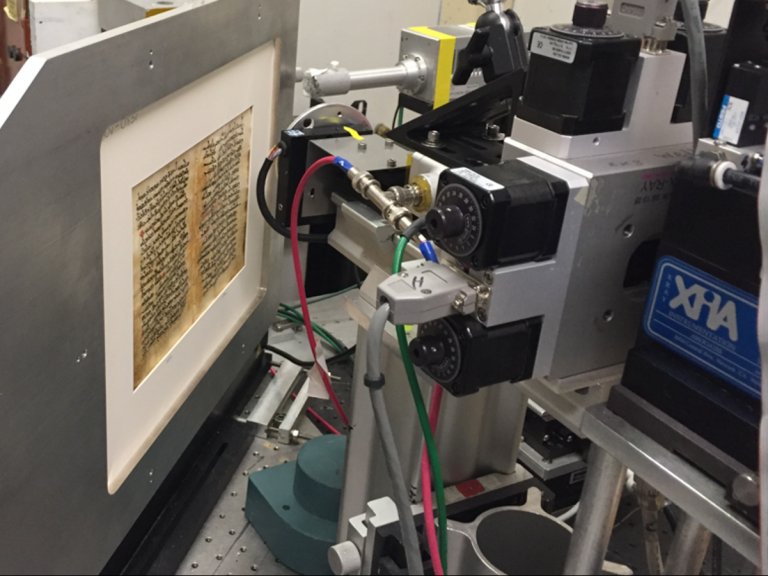
This is an accordion element with a series of buttons that open and close related content panels.
Uwe Bergmann | Discovering Our Natural History and Cultural Heritage
We reveal damaged, erased, and obstructed writings in ancient manuscripts to learn about the genius of their authors and their cultural impact. We image chemical ghosts of fossils to explore prehistoric creatures and their preservation. Synchrotron rapid-scan imaging and spectroscopy provide us the microscopic X-ray vision.
Bergmann Group homepage | Uwe Bergmann directory listing
Pupa Gilbert | Experimental biophysics and condensed matter with synchrotron spectromicroscopies
My group and I are interested in biomineralization, that is, in understanding the formation mechanisms, physical nanoscale structure, composition, and materials properties of natural biominerals. These include coral skeletons, sea urchin spines, mollusk shell nacre, and tooth enamel.
Gilbert Group homepage | Pupa Gilbert directory listing
Physics Education
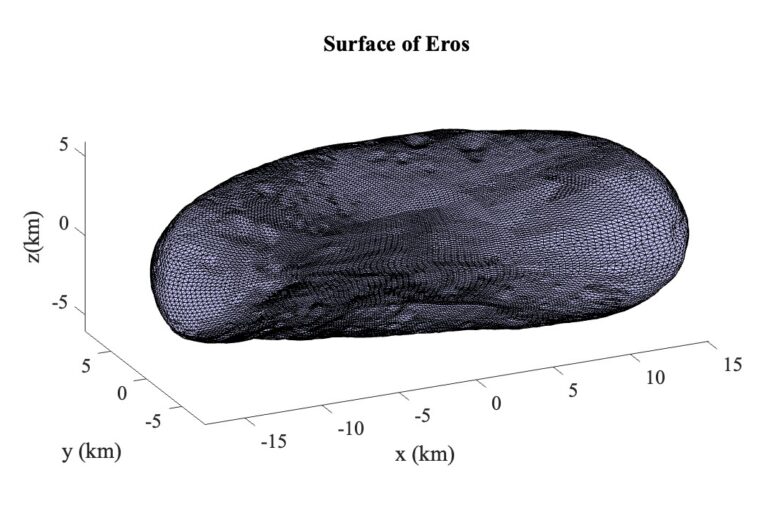
This is an accordion element with a series of buttons that open and close related content panels.
Duncan Carlsmith | Computation in the curriculum, Live Script tutorials
I am presently focused on innovation in teaching and learning, especially now the introduction of computation into the curriculum through the development of interactive Live Script tutorials, and a variety of interdisciplinary projects. Representative tutorials are available at the MathWorks File Exchange and touch such topics as asteroid shapes and gravitational fields; precision modeling of asteroid motions in the solar system; gravitational wave reconstruction; mobile phone astrometry; GAIA, Hipparacos, and classic star catalog access and analysis; exoplanets, and AI-generated coding. A recent interdisciplinary topic was classification of mosquito and tick species images using deep learning in collaboration with the Midwest Center of Excellence for Vector Borne Disease.
Live Script Tutorials in Physics and Astronomy | Duncan Carlsmith directory listing
Affiliate Faculty
The following faculty members have primary appointments in other departments, but are affiliate faculty of the Department of Physics. They are approved trainers for the Physics PhD program.
- David Anderson | Electrical and Computer Engineering | Plasma physics
- Paul Campagnola | Biomedical Engineering | Biophotonics Approaches to Cancer Biology and Tissue Engineering
- Elena Donghia | Astronomy | Dynamical processes that form the stellar skeleton of our Galaxy
- Chang-boem Eom | Materials Science and Engineering | Thin film fabrication and characterization
- Chris Hegna | Engineering Physics | Plasma theory, plasma confinement using magnetic fields
- Sebastian Heinz |Astronomy | High energy astrophysics and extragalactic astronomy
- Mikhail Kats | Electrical and Computer Engineering | Optics and photonics, device physics, nanoscale science and quantum technologies
- Jason Kawasaki | Materials Science and Engineering | Electronic, magnetic, and elastic properties of materials at crystalline interfaces
- Irena Knezevic | Electrical and Computer Engineering | Quantum transport theory and simulation
- Alex Lazarian | Astronomy | MHD theory, interstellar dust and turbulence, molecular clouds
- Yuan Ping | Materials Science and Engineering | Ab-initio many-body theory and quantum dynamics in solids
- Daniel Rhodes | Materials Science and Engineering | Cradle-to-grave processing of materials
- Oliver Schmitz | Engineering Physics | Plasma edge physics with 3D boundaries
- Micheline Soley | Chemistry | Quantum computing algorithms, ultracold chemistry & quantum control, and novel spectroscopic tools
- Carl Sovinec | Engineering Physics | Plasma theory & computation
- Ying Wang | Electrical and Computer Engineering | Nanoscale quantum materials & devices
- Jun Xiao | Department of Materials Science and Engineering | Shedding light on quantum materials & devices
